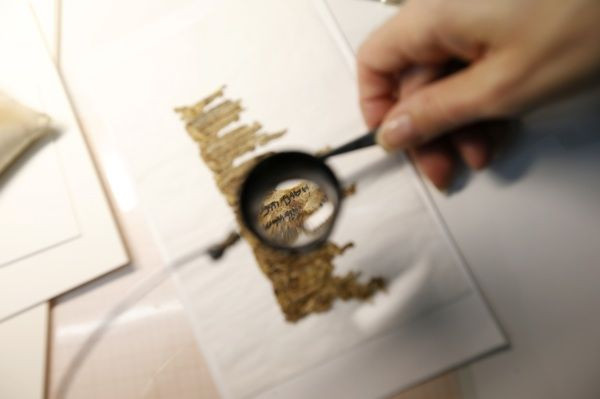Who Wrote The Dead Sea Scrolls? 33 New Skeletons Could Give Answers

The caves near the Dead Sea have been a source of constant debate for a long time now. A 12th cave was discovered in September 2017, which was used to house the ancient documents. Now, there might be a scientific way to figure out who once occupied a settlement located near the caves where the Dead Sea Scrolls were found.
The Dead Sea scrolls are considered the greatest manuscripts of all time. It consists of over 800 documents that make up the earliest pages of the Hebrew bible and the beginning teachings of Christianity, including the 10 Commandments. The scrolls were found in 11 caves between 1947 and 1956 caused a serious debate about who occupied the region . In 2017, researchers revealed they had found another cave in the same area that possibly held scrolls or pieces of papyrus and leather intended to be written on.
Nearly 33 newly excavated skeletons of people buried at Qumran have been analyzed and the findings seem to support the notion that the ancient community consisted of a religious sect of celibate men .
Anthropologist Yossi Nagar of the Israel Antiquities Authority in Jerusalem presented the findings Nov. 16 during the annual meeting of the American Schools of Oriental Research. The findings were obtained by radiocarbon dating of one of the Qumran bones. The study showed that the bodies were around 2,200 years old when they were excavated. This is very close to the estimated age of the ancient texts, which are estimated to have been written between around 150 B.C. and A.D. 70.
Another startling findings has dispelled previously held notions that seven of the bodies belonged to women. On re-examination of the bones which are now housed in France, the researchers found that six of seven individuals formerly tagged as women were actually men, Nagar said in a Science News report. A small number of children have also been excavated at Qumran.
Nagar was called in to study the skeletons. He identified 30 of the newly excavated individuals as definitely or probably males, based on factors that include the pelvic shape and body sizes. At the time of their deaths, the men ranged in age from around 20 to 50 or more, Nagar estimated.
“I don’t know if these were the people who produced the Qumran region’s Dead Sea Scrolls,” Nagar said in the report. “But the high concentration of adult males of various ages buried at Qumran is similar to what has been found at cemeteries connected to Byzantine monasteries.”
Past excavations and study of archaeological sites at Qumran suggested it was founded more than 2,700 years ago. War tore apart the region and the people abandoned the area in search f safety only to reoccupy the area for about 200 years, up to around the year A.D. 68.
One of the earliest and most conspiracy theories claims that members of an ancient, celibate Jewish sect, the Essenes, lived at Qumran and either wrote the Dead Sea Scrolls or were caretakers of these religious, legal and philosophical documents. But over the past 30 years, other possible inhabitants of Qumran have been proposed, including Bedouin herders, craftsmen and Roman soldiers.
DNA from the newly excavated Qumran skeletons would help confirm that they are all, or almost all, men and also quell a few notion surrounding the mystical region.
© Copyright IBTimes 2024. All rights reserved.





















